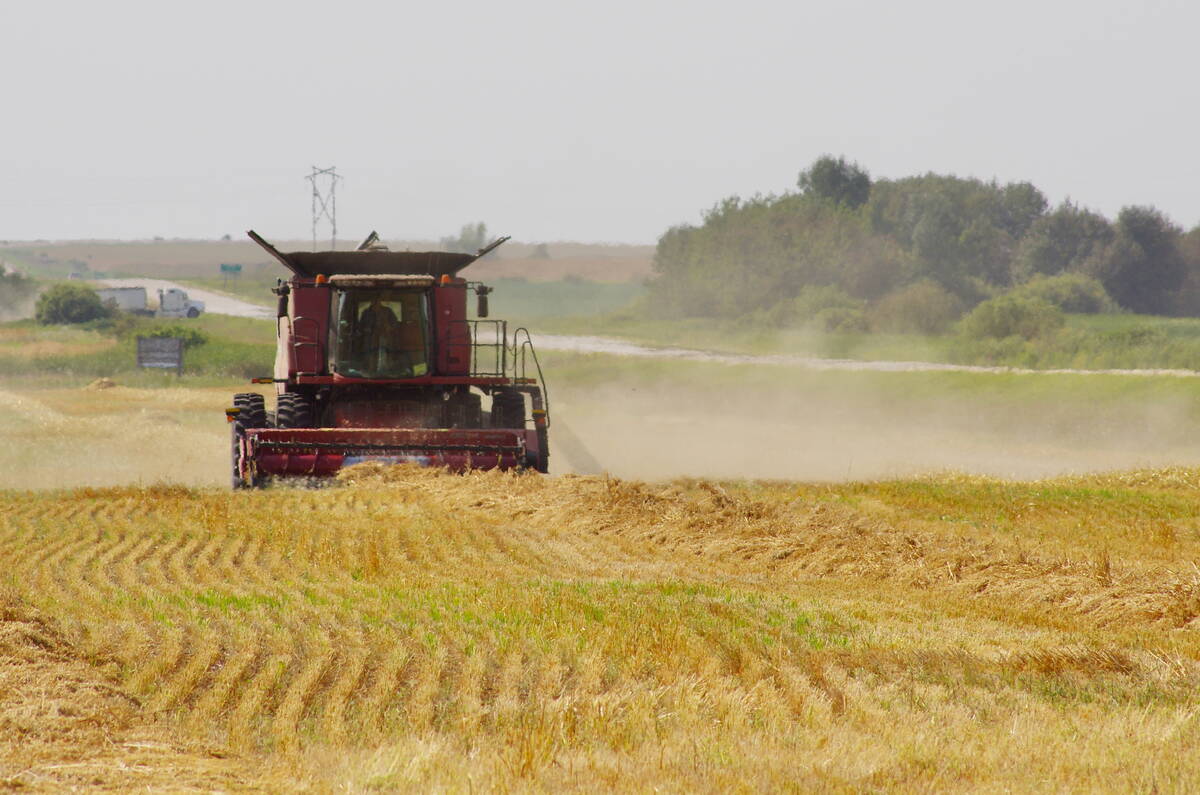With resistance still an elusive research goal, rotation of both crops and fungicides remains the best tool against disease
Identifying and managing diseases is crucial to yield and grain quality.
Spraying technology, chemical application and new seed varieties help in the battle for healthy crops, but fungi, bacteria and other microorganisms continuously adapt, becoming resistant to genetic defences and crop protection products.
So, what are the latest threats?
Green and yellow peas, chickpeas, lentils, faba beans and lupins are prone to a variety of fungal and bacterial diseases.
Peas and lentils, the most common pulses grown on the Prairies, are susceptible to numerous forms of root rot such as Aphanomyces euteiches, Fusarium avenaceum, Fusarium solani and Fusarium oxysporum.
Read Also

Herbicide resistance sprouts in Manitoba’s wild oats
Farmers across Manitoba this fall are gearing up for the latest salvo in what, for many, has become a longtime battle to beat out wild oats.
Michelle Hubbard, pulse pathologist for Agriculture and Agri-Food Canada in Swift Current, says one fungus is much more concerning than the rest.
“If I had to pick the biggest (concern), it’s root rot in peas and lentils caused by aphanomyces,” she said. “It’s difficult to manage because once it’s there, it can form resting spores, oospores that can live for 10 years or more in the soil.”
Aphanomyces is a common disease for peas and lentils, which makes it difficult for growers to keep these crops in their rotation. No application can effectively manage it and no crop variety is completely resistant.
“The most effective thing farmers can do is long crop rotations,” Hubbard said. “We typically recommend six to eight years away from peas or lentils, which is a really long time to avoid a crop that otherwise has a lot of benefits.”
Hubbard says efforts are being made to breed pea varieties with resistance to aphanomyces but it will be incomplete and won’t be ready until at least 2025. Incomplete resistance leaves the door open for root rot to take hold while also possibly mutating.
“Resistance has taken years and years, especially by researchers in France, to find the pieces of DNA that can confer this partial resistance. If people grow it in areas where there’s a lot of root rot, the resistance could be lost, meaning aphanomyces could evolve to overcome that resistance,” Hubbard said.
She said other research has shown promising but incomplete results. Gypsum applications, which contain calcium and sulfur, have increased yield in tests done where heavy root rot was present, even if it doesn’t decrease disease prevalence.
For lentils, Hubbard said the big enemy is anthracnose, caused by Colletrotrichum lentis. It is a redundant disease that produces water-soaked lesions on plant leaves until they fall off, eventually killing the plant. It can be managed through crop rotation and fungicide application.
The fusarium diseases F. avenaceum, F. solani and F. oxysporum, can be managed with resistant seed varieties as well as fungicides. If left unmanaged, they can infect and damage both the plant and the seed.
As for chickpeas, blight caused by Ascochyta rabiei can infect all above-ground parts of the plant. It browns the infected area and will kill the plant if left alone, but can be managed similarly to that of anthracnose in lentils.
While drought conditions aren’t a farmer’s friend, neither are they great for fungal diseases.
Sabine Banniza, a plant pathologist with the University of Saskatchewan Crop Development Centre, said root rot in pulses is caused by a complex of pathogens, including several species of aphanomyces and fusarium. The exact mix depends on soil and cropping history.
In her presentation at the Western Canadian Crop Production Show in January, Banniza said root rot pathogens such as aphanomyces thrive in wet conditions and compacted soils although they also persist through drought.
“Drier conditions doesn’t mean it’s gone but it’s at a lower level,” she said. “These pathogens hang around for a long time, certainly more than four years. We’ve had aphanomyces persist even after 12 years, depending on the soil and infestation level.”
As for fusarium, it also loves the wet but hangs around during dry conditions to prey on crop plants weakened by lack of moisture.
“Fusarium finds it easier to invade and we will see root rot with fusarium under drought conditions,” Banniza said.
While there is lots of ongoing research into chemistry and biocontrols, there is no effective treatment against aphanomyces and long rotations remain the recommended strategy. Fungicides should also be rotated since root rot pathogens are developing resistance to these products. Clean seed is also a must to avoid infecting clean fields.
Long rotations can be tough both economically and practically, since fusarium can infect a much broader variety of crops. That said, there are tools to fight it in cereal rotations.
Banniza said preserving healthy soil microbiomes may also help, as some microorganisms are known to knock down aphanomyces populations in the soil. Also, since root rots tend to destroy nitrogen-fixing nodules on the roots of pulse crops, a supplemental application of nitrogen fertilizer might be beneficial.

















